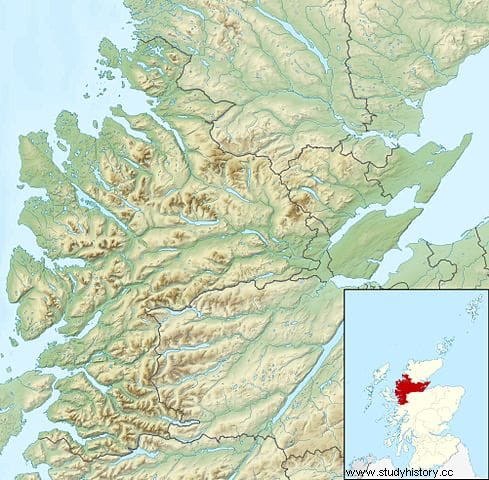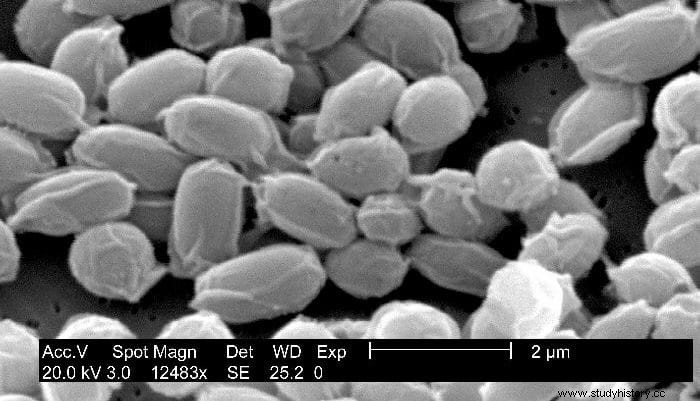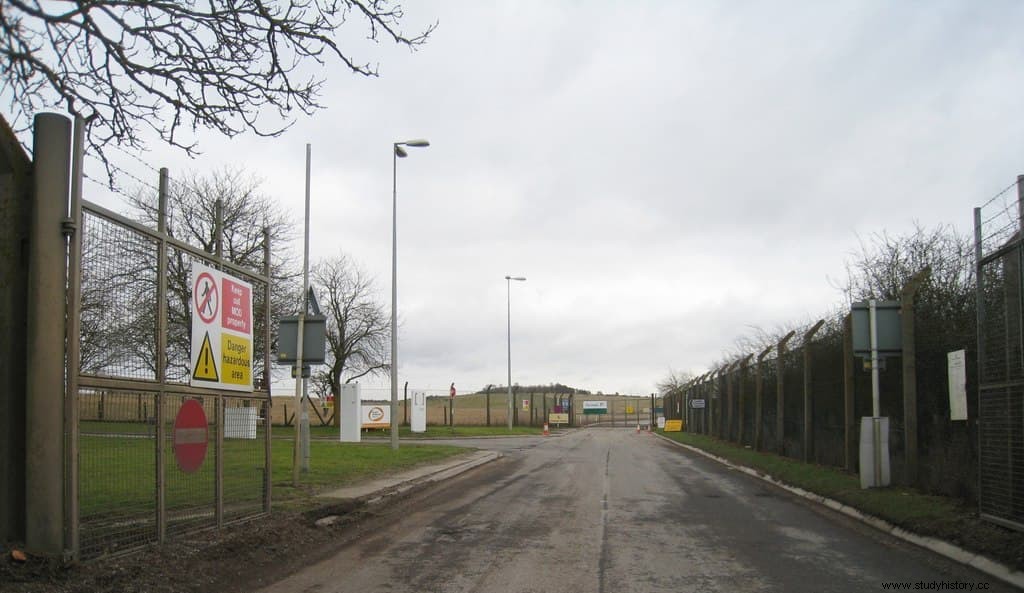Five users of a comics forum agree to meet because one of them has the original of a strange cult graphic novel whose possession is also wanted at all costs by a mysterious organization called The Network. The five characters are forced to flee and remain hidden from that enemy that seems to be everywhere. It is the basic plot of the television series Utopia and part of its third episode takes place on an island that is quarantined because it is where the first outbreak of a deadly virus was located; well, these scenes are inspired by real events that occurred on a remote Scottish island called Gruinard.
It is a small oval piece of land approximately two kilometers long by one wide and located in the bay of the same name, between the towns of Gairloch and Ullapool; It is located one kilometer from the northwest coast of Scotland, although it is not part of the Hebrides archipelago. A site that, according to the clergyman Donald Munro, who in the 16th century published a work entitled Description of the western isles of Scotland Counting his trip through the area, it was owned by the MacKenzies, a clan that in the Middle Ages supported Robert the Bruce against England and three hundred years later did the same with the Jacobite cause.

Gruinard was not a suitable place to live and there is only a record of half a dozen neighbors in 1881, remaining empty from the twenties of the last century, parallel to its deforestation. But if those conditions are bad from one point of view, from another they are not so bad:an uninhabited island of limited size is a good place to do bacteriological tests and that is why in 1942, in the midst of World War II, it was the place chosen to rehearse the Operation Vegetarian (Vegetarian Operation).
It was a plan to spread through the fields of Germany a kind of cake for cattle infected with spores of anthrax, a bacterium (Bacillus anthracis ) that causes the disease called anthrax, which if it only affects the skin is mild but if it affects the respiratory system it is fatal. As it is transmitted mainly by ingestion, the contaminated meat would pass to humans causing numerous casualties or, failing that, it would kill the cattle and leave the country doomed to starvation.
Therefore, the name Vegetarian Operation was a macabre sarcasm. It was an extreme expedient to be applied in response should the Nazi regime do the same to the UK, which is what was feared following reports of such weaponry being experimented on by the enemy; This is how, for example, sarin gas, hitherto unknown in Great Britain, was first heard of.

As we know, in the end Operation Vegetarian was unnecessary and the five million of those deadly cakes that had been made since 1944 had to be destroyed in an incinerator at the end of the war. But trials did take place on the island, as did others on the Gower Peninsula in Wales the following year. This was handled by the Porton Down Department of Biology, located in the laboratories of the British Ministry of Defense in Salisbury (England) and specialized in chemical and biological weapons (the aforementioned anthrax, botulinum toxin...) under the direction of the scientist Paul Fildes.
A team of fifty people led by Sir Oliver Graham Sutton started it after requesting permission from the owner of the island. Eighty sheep were herded into it, distributed in groups to various areas, in each of which a spore-filled bomb of an extraordinarily virulent strain called Vollum 14578 was detonated. (after the Oxford University biologist who supplied it, R. L. Vollum). The animals died one after another (a 16mm color film of the entire process was recorded), proving that Operation Vegetarian was feasible.
Unfortunately, it was also clear that such a contaminated site would remain uninhabitable for a long time, since, despite burning the carcasses of the sheep and proceeding with decontamination, they did not give the expected result. Thus, the island could not be returned to its owner and was acquired by the Government with the promise of returning it for a symbolic price (five hundred pounds) when the experts considered it safe. Since there were no funds for this after the war, Gruinard was quarantined for four decades; annual soil tests showed that anthrax was still present.
However, the most surprising thing about this story was its strange epilogue, which came in 1981 with the peculiar name of Dark Harvest Commando of the Scottish Citizen Army (Scottish Citizen Army Command Dark Harvest). This is how this bioterrorist group signed the messages that it sent simultaneously to the newsrooms of the newspapers demanding that the government decontaminate the island once and for all and reporting that a group of microbiologists from two universities, helped by local people, had collected one hundred and forty kilos of soil from which samples would be left at different points if their claims were not addressed.

It wasn't a joke; That same day, a package with a soil sample appeared at the entrance of Porton Down in which, after the corresponding analysis, anthrax bacteria were found. The sinister threat was repeated days later in Blackpool, where the Conservative Party, then in the executive, was holding its annual congress. In this second case, no bacilli were found, but the soil had the same appearance as the previous one, an indication of its same origin.
In any case, the Government did not yield or, at least, not immediately. It was not until 1986 that a decontamination of Gruinard began, spraying it with two hundred and eighty tons of formaldehyde (a compound derived from methyl alcohol) diluted in seawater. Some one hundred and ninety-six hectares were covered, and the upper layer of soil was also removed in the most contaminated areas. The survival, without effects on her health, of a new flock of sheep led ad hoc It showed that the island was finally clean.
Consequently, on April 24 the quarantine was lifted and four days later, as promised, the heirs of the owner, now deceased, were able to cash the five hundred pounds to recover their property. In the end, the only bad ones were those sheep that served as guinea pigs in 1942.
